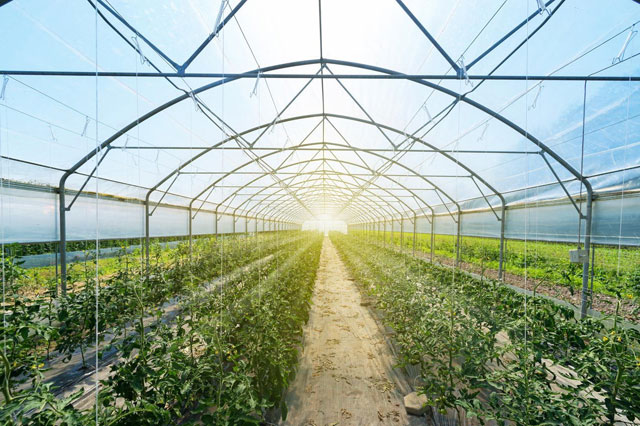In the realm of modern agriculture, the quest for innovative and sustainable solutions has led to the development of cutting-edge technologies, one of which is the ETFE (ethylene tetrafluoroethylene) film.
This transparent, lightweight material has revolutionized greenhouse construction, offering a myriad of advantages over traditional coverings. In this article, we will delve into the distinctive features and benefits that make ETFE greenhouse film a game-changer in the agricultural industry.
Exceptional Transparency and Light Transmission
Unlike traditional greenhouse materials, such as polyethylene or polycarbonate, ETFE allows a higher percentage of light to penetrate, ensuring optimal conditions for plant growth. Enhancing light transmission facilitates photosynthesis, fostering the vitality of crops. Additionally, ETFE film can filter harmful UV rays, protecting plants from potential damage.
Lightweight and Durable
Noted for its lightweight and durable characteristics, ETFE film surpasses glass in weight, diminishing the overall load of the greenhouse framework. This characteristic not only makes installation and maintenance more manageable but also lowers construction costs. Despite its lightness, ETFE is incredibly durable and resistant to weathering, ensuring a long lifespan for the greenhouse.

Energy Efficiency
ETFE greenhouse film boasts excellent insulation properties, helping to create a controlled and energy-efficient environment. The material adeptly preserves heat, lessening the requirement for supplemental heating in colder intervals. This energy-efficient approach not only diminishes operational expenses but also aligns with the increasing focus on sustainable and eco-conscious agricultural methods.
Flexibility in Design
The flexibility of ETFE film allows for innovative and aesthetically pleasing greenhouse designs. Its adaptability empowers architects and designers to craft distinctive and dynamic structures tailored to specific agricultural requirements. The material can be inflated to form a cushion-like structure, providing additional insulation and increasing its ability to diffuse light evenly throughout the greenhouse.
Resistance to Environmental Factors
ETFE film exhibits remarkable resistance to environmental factors such as hail, wind, and extreme temperatures. Its ability to withstand harsh conditions ensures the longevity and stability of the greenhouse, providing a secure environment for crops even in challenging climates. This resilience makes ETFE an ideal choice for agricultural operations in regions prone to adverse weather.
Low Maintenance Requirements
Farmers and greenhouse operators appreciate the low maintenance requirements of ETFE films for greenhouses. Its self-cleaning properties, combined with resistance to dust and dirt, reduce the need for frequent cleaning and maintenance. This attribute not only streamlines tasks but also enhances the overall cost-effectiveness of the greenhouse.
Conclusion
With its exceptional transparency, lightweight design, energy efficiency, and resistance to environmental factors, ETFE film is at the forefront of modern agricultural innovation. As the demand for high-quality and sustainable food production rises, the adoption of ETFE film for greenhouses is set to play a pivotal role in shaping the future of agriculture.